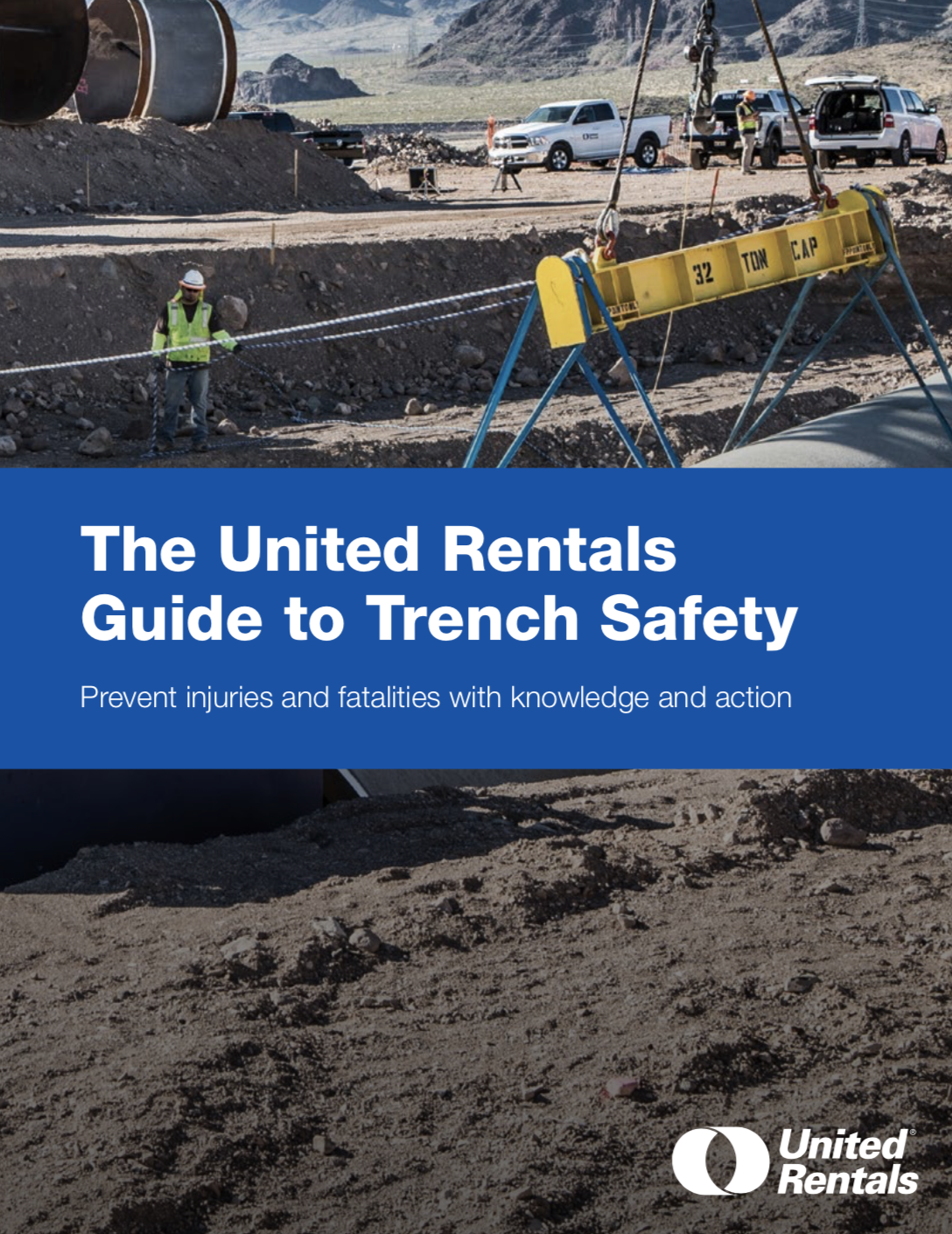Any laborer working in a trench must have a clear understanding about the hazards involved and about necessary safety precautions.
In 2016, 23 construction workers died while working in trenches. Although numerous safety standards, precautions, and preventive measures for working in trenches already exist, the number of trench deaths last year more than doubled the eleven deaths that occurred in 2015. Any laborer working in a trench must have a clear understanding about the hazards involved and about necessary safety precautions.
Obeying OSHA’s trench safety standards and maintaining constant awareness of the hazards associated with trench work can prevent deaths and injuries. Essential safety tips for trench work include:
- Obeying OSHA trench safety standards
- Having a written company policy
- Selecting a competent person to inspect trenches
- Wearing the appropriate Personal Protective Equipment (PPE)
- Ensuring continuous ventilation
- Deploying fall protection safeguards
- Using shoring systems
Complying OSHA Standards for Trenching and Excavation Safety
OSHA specifies detailed methods for protecting workers from cave-ins. Because trench construction involves many complex factors, these standards cover requirements for sloping, shoring, and shielding as well as for installing and removing protective support systems. Workers and managers alike should learn these standards and review them regularly.
Following a Written Company Policy
On an executive level, construction companies should have a detailed policy that outlines safe trenching practices. This policy should underscore the need for proper planning and supervision, require frequent inspections of excavation sites to detect any change in soil conditions, and ensure adequate support for trenches. A good policy will thoroughly outline responsibilities and standardize safe practices for employees.
Selecting a Competent Person to Inspect Trenches
Compliance with OSHA standards requires the selection of a competent individual to inspect trenches and identify potential hazards. Inspections must cover every aspect of excavation, safety and shoring equipment, and details such as soil type, work in adjacent areas, the possibility of vibrations, and weather conditions. Pre-work hazard inspections also include ensuring that trench workers have the appropriate protective equipment. Competency means the ability to identify existing and potential hazards in the surrounding area or dangerous working conditions; this individual must have the authority to remove employees from dangerous areas and to deploy corrective measures if necessary.
Wearing the Appropriate Personal Protective Equipment (PPE)
Trenching and excavation PPE includes hardhats, safety glasses, gloves, footwear, hearing protection, respirators, high visibility safety vests, and fall protection devices. Full-body safety harnesses should have a shock-absorbing lanyard attached to workers' backs and an anchor to a weight-bearing support.
Ensuring Continuous Ventilation
Air ventilation systems in trenches must adequately ventilate every occupied area within the confined space unless a low hazard atmosphere exists. Continuous ventilation keeps concentrations of airborne contaminants and gases below exposure limits.
Deploying Fall Protection Safeguards
OSHA requires the use of standard railings or a safety harness and lanyard if a work environment extends six feet or more above the level below. Fall protection posts should attach securely to the top of a rail panel or trench shield. In turn, four-to-six-foot-wide rails should support a 300 to 500 lb. load across any part of the fall protection system. Trench plates assure safe surface crossing of trenches for foot traffic and vehicles.
Using Shoring Systems
Shoring systems prevent the movement of soil. If a slide occurs, workers must stay within the shield. Several types of shoring systems, such as spaced sheeting, closed sheeting, slide rails, trench shields, and trench boxes, can protect workers from accidents.
Spaced sheeting places spaced timber shores, bracing, trench jacks, or other materials around the boundary of a proposed excavation. Horizontal planks extend between the vertical materials to support the sheeting. Closed sheeting places a wall of continuous solid plates along the entire length of the trench.
Some excavation sites may opt for a slide rail consisting of steel panels and vertical steel posts rather than a full trench shield, providing an entrance for excavation equipment. Hydraulic shoring systems use prefabricated aluminum or steel as trench support and pressure gauges located throughout the system ensure the equal distribution of hydraulic pressure along trench lines. A pneumatic shoring system duplicates this trench support system but uses compressed air to push trench jacks into place.
Companies can also use prefabricated shields or portable trench boxes to protect from earth slides. Some trench operations may combine shielding with sloping to provide additional protection. Some trench shields consist of steel plates welded to a heavy steel frame; others use aluminum or fiberglass sheeting.
Download the United Rentals Guide to Trench Safety



